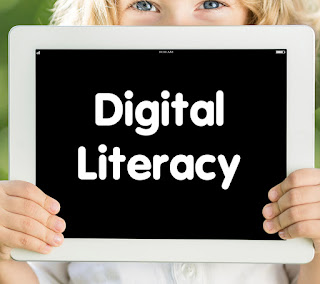Are you interested in making your class more engaging for
students? Why not gamify your class?
As you know, gamification is the use of gaming principles
to get students involved, engaged, and excited about learning. It consists of
adding game elements to a non-game situation. It introduces concepts like
badges, levels, achievements, and game points to the classroom. Students are
rewarded with these concepts when they succeed. By introducing a system of
rewards without harsh penalties, students are not afraid to step outside of
their comfort zone and fail. By removing their fear of failure, we encourage
them to learn.
Gamification
Resources
·
Brainscape - Brainscape
is a web-based platform that is designed to help students study smart. The
program creates flashcards and changes the pattern based on what students know
and what they seem to be struggling with. Site: https://www.brainscape.com/
·
Breakout EDU - Breakout
EDU creates engaging learning games for people of all ages. Games (Breakouts)
teach teamwork, problem solving, critical thinking, and troubleshooting by
presenting participants with challenges that ignite their natural drive to
problem solve. You create the perfect breakout for your students! Site: http://www.breakoutedu.com/
·
Class Craft - Class
Craft is a free online, education role-playing game that teachers and students
play together in the classroom. Student can level up, work in teams, and
earn powers that have real-world consequences. It provides a layer around any
exisiting curriculum in order to transform the way students learn. Site: http://www.classcraft.com/
·
Class Dojo - Class
Dojo turns your class into a game of rewards and instant feedback. Class Dojo
is a classroom management tool to help teachers improve behavior in their
classrooms quickly and easily. It improves specific student behaviors and helps
engagement by issuing awards and recording real-time feedback.Site: https://www.classdojo.com/
·
Class XP - Class XP is a grade tracking dashboard for students that
integrated game mechanics. Students earn points (grades), gain levels (grades),
and in a way, have leaderboards. There are class valedictorians and student are
essentially ranked based on points. Site: http://classxp.org/
·
DuoLingo - DuoLingo is a massive online web platform designed to help student
learn a given language online. Beginners start out with basic, simple sentences
from the web, while advanced users receive more complex sentences. As a student
progresses, so does the complexity of
the sentences they are asked to translate. Skill points are earned as students
progress through lessons. Site: https://www.duolingo.com/
·
Ribbon Hero - Ribbon Hero is an add-in game, available as a free Microsoft
download, to help educate users of Office 2007 and 2010 on how to use the tools
available in the new ribbon interface. Once installed, the game can easily be
initiated form any of the key Office programs, such as Word, Excel, and
PowerPoint. Once in the game, the user is presented with challenges which can
yield points if completed. Site: http://www.ribbonhero.com/
·
3D Game Lab - 3D Game Lab is a gamified content creation and student tracking
platform where teachers can design and share quests and badges to create
personalized learning for their students. Students "level up" through
the curriculum, choose quests they want to play, and earn experience points,
badges, and awards. Site: http://3dgamelab.com/
Ideas
to Gamify Your Classroom
·
Foster collaboration - Present the classroom
syllabus as a form of a game and have students create classroom goals and rules
with you.
·
Provide instant feedback - In a game setting,
feedback is essential for students to know how they are doing in the game. If a
student makes a choice in a game, it is usually known immediately if that
choice was the right one.
·
Make progress visible - Progress bars and
levels in games allow students to set goals for themselves and celebrate
success once achieving them.
·
Create challenges instead of homework - In
games, students are constantly required to meet challenges, such as identify
patterns or break codes. The same element can be applied to homework and
projects in a fun, yet challenging way.
·
Give students choice and a voice - Games often
give students various choices. Instead of simply issuing a test, you can allow
student to take different paths to demonstrate their understanding of the
material.
·
Offer badges and rewards - Badges or other
rewards are a good way of recognizing student achievement and for giving
students an incentive to continue reaching their goals.
·
Allow for second chances - When a challenge is
failed in a game, students are able to learn from their mistakes and try again.
Try using one of the resources and ideas above to
enhance the overall learning experience of your students.






